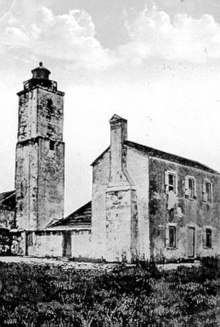
On May 28th and 29th, 1586, soon after the Anglo-Spanish War began between England and Spain, the British pirate Sir Frances Drake, pillaged and burned St. Augustine. He allowed the governor and the towns people to flee for their safety first.
In 1668, the English buccaneer Robert Searle then sacked St. Augustine, killing sixty people and pillaging government buildings, churches and houses, after which his pirates ransomed off some of their hostages and sold others into slavery. In 1702, during Queen Anne's war, after a brutal British attack that lasted 58 days,, the British troops burned St. Augustine to the ground as they retreated. This was followed by yet another fiery British siege in 1740.
In 1763, after Great Britain's victory over France and Spain during the Seven Years' War, the Treaty of Paris was signed and St. Augustine was finally handed over to Britain. The HMS Industry, one of the first boats sent to the new territory, sank in the waters just below the looming light house.

The St. Augustine Lighthouse had existed since 1586, until it fell into the ocean in 1880 due to erosion. It was the earliest, permanent aid-to-navigation in the continental United States of America.

The light house has it's share of ghost stories and sightings. The keeper's house basement is the setting for some suspicious activity. Shortly after the lighthouse was rebuilt, it is said that a lighthouse keeper hung himself in the basement. People have claimed to see a man in blue lurking in the shadows. Some people say that the man in blue is the keeper that hung himself. Others say that it could be that it is the restless spirit of lighthouse keeper Joseph Andreu, who fell to his death while painting the original tower in 1859. Visitors and staff report the overpowering smell of cigar smoke on the landing of the tower, despite the fact that smoking is expressly prohibited on the grounds. Is the smoke smell from Andrew or is it from a man named Peter Rasmusson? He was the lighthouse keeper from 1901 to 1924, which was the longest stint of any keeper. He was a crabby guy and a smoker who hated tourists. Some people also claims that he is the man in blue.
A man named Hezekiah H. Pittee oversaw the construction work. To entertain his restless children, he allowed them to play with the supply cart that ran back and forth between the lighthouse and the ocean. On July 10th, 1873, the two eldest Pittee children, Eliza and Mary, drowned when the cart toppled over into the water. Historians believe that a third child, a young African-American girl, was also killed in the accident. Lighthouse workers say that the mischievous spirits of these children still haunt the lighthouse today. Workers will find locked doors standing wide open the next day, and the sound of children’s laughter can be heard in the stairwell. Music boxes sold in the gift shop inexplicably pop open, playing by themselves. Tour guides report multiple incidences of being touched or grabbed by ghosts while showing visitors around the lighthouse. In one particular tour, there were little children's footprints found in the sand, despite there being no children on the tour.
Visitors to the lighthouse report catching glimpses of a young girl dressed in period clothing peering out from the lighthouse door or standing near an upstairs window.

In 2009, a cell tower worker took a photo of his coworker with the lighthouse in the background and seemed to capture the figure of a young girl in a long dress with long hair, standing alone on the top observation deck.
One of the first lighthouse keepers, William Harn, was also one of the first keepers to die in the lighthouse. He had malaria and tuberculosis that he caught from the Civil War. Coughs can be heard from the parlor room and is suspected that those are the coughs from William.

No comments:
Post a Comment